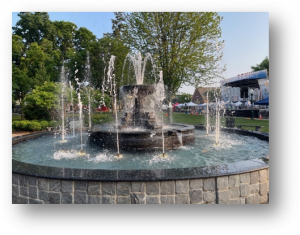New Website: KeepPlymouthCharming.com Launches to Protect Plymouth’s Unique Character: A Stand Against the Champion PUD
“Plymouth is more than just a place on the map; it’s a community defined by its deep-rooted history and a commitment to maintaining its character,” said Kathryn Szary. “With the Champion PUD threatening to upend our cherished way of life, this website serves as a rallying point for locals who believe in protecting what makes Plymouth special. It’s about preserving our heritage and ensuring that our voices are heard in this critical debate.”
Longtime resident Hank Jallos reinforced this commitment by stating, “The proposed Champion PUD represents a fundamental challenge to our community’s well-being.”
Szary added, “We’re using www.KeepPlymouthCharming.com to educate our neighbors, foster meaningful dialogue, and mobilize collective action. Our mission is clear: preserve the soul of Plymouth and secure a future where progress does not come at the cost of our town’s character."
“Small-town America is under assault by ‘care-less’ developers who just want to maximize density to maximize their profits. The city of Plymouth taxpayers behind this website are dedicated to preserving the charm, character, and heritage that makes Plymouth so desirable,” says Bob Bake, longtime Plymouth realtor, now retired.
“The rules of our town require a clear and significant public benefit for this kind of project,” says David Pierce, nearby resident and former regulatory enforcement analyst for the federal government (SEC, FERC). “The Champion PUD simply doesn’t have a public benefit. This is not a good project, it doesn’t merit throwing out the rule book, especially when you continue to hold others to the rules.”
Designed with a focus on clear communication and empowering residents, the website provides essential information on the potential impacts of the Champion PUD, strategies for community engagement, and ways for individuals to get involved in the advocacy efforts. This initiative underscores the community’s resolve to maintain Plymouth’s charm in the face of change that many believe could marginalize the town’s unique identity.
Residents and supporters who are concerned about the future of Plymouth can visit www.KeepPlymouthCharming.com to learn more about the issues at hand and explore actionable steps to combat the Champion PUD.
The proposed highly dense project is located at 1100 W. Ann Arbor Trail on the site of the First Christian Science Church near the corner of Ann Arbor Trail and Harvey Street in the city of Plymouth. It consists of 20 units at 2.5-stories about 24.75-feet tall, and a new 3,400-square-foot church. The project has met incredible resistance from taxpaying residents about its density and compatibility with the existing single-family zoning regulations. Currently the property is zoned R-1, single-family, which has a height limitation of two stories.
“The residents are rightfully concerned about the extra traffic this project will generate, especially with regard to the safety of 1400 students attending nearby Bird Elementary and West Middle Schools,” said Sam Barresi, former principal of Bird Elementary School.
“I find it deeply concerning the city is considering a PUD that effectively overrides community standards with unsightly barracks-style townhouses,” says Mike Gladchun, RE/MAX Classic ~ Plymouth. “The logo for Plymouth is the city of homes, not high-density condos that don’t fit the character of our community.”
Keep Plymouth Charming is a community-driven effort dedicated to safeguarding the legacy and character of Plymouth. The website is the hub of information and advocacy for residents determined to influence the future course of development in their hometown.
For more information visit: www.KeepPlymouthCharming.com
-END-
Media Contacts:
Scott Lorenz, Westwind Communications, 248-705-2214 or scottlorenz@westwindcos.com
Kathryn Szary: kathryn@roguesearch.com
Scott Lorenz
Westwind Communications
+1 248-705-2214
scottlorenz|westwindcos.com| |scottlorenz|westwindcos.com
Legal Disclaimer:
EIN Presswire provides this news content "as is" without warranty of any kind. We do not accept any responsibility or liability for the accuracy, content, images, videos, licenses, completeness, legality, or reliability of the information contained in this article. If you have any complaints or copyright issues related to this article, kindly contact the author above.
All Aboard! Thomas & Friends™ Returns to The Delaware River Railroad Excursions for an 80th Anniversary Celebration
Assurance maladie : un tiers de la population suisse envisage de quitter sa caisse en 2026
Krankenversicherung: Ein Drittel der Schweizer Bevölkerung erwägen, bis 2026 die Krankenkasse zu wechseln
Więcej ważnych informacji
 Jedynka Newserii
Jedynka Newserii

 Jedynka Newserii
Jedynka Newserii

Handel

1 października ruszy w Polsce system kaucyjny. Część sieci handlowych może nie zdążyć z przygotowaniami przed tym terminem
Producenci, sklepy i operatorzy systemu kaucyjnego mają niespełna dwa miesiące na finalizację przygotowań do jego startu. Wówczas na rynku pojawią się napoje w specjalnie oznakowanych opakowaniach, a jednostki handlu powinny być gotowe na ich odbieranie. Część z nich jest już do tego przygotowana, część ostrzega przed ewentualnymi opóźnieniami. Jednym z ważniejszych aspektów przygotowań na te dwa miesiące jest uregulowanie współpracy między operatorami, których będzie siedmiu, co oznacza de facto siedem różnych systemów kaucyjnych.
Ochrona środowiska
KE proponuje nowy cel klimatyczny. Według europosłów wydaje się niemożliwy do realizacji

Komisja Europejska zaproponowała zmianę unijnego prawa o klimacie, wskazując nowy cel klimatyczny na 2040 roku, czyli redukcję emisji gazów cieplarnianych o 90 proc. w porównaniu do 1990 rok. Jesienią odniosą się do tego kraje członkowskie i Parlament Europejski, ale już dziś słychać wiele negatywnych głosów. Zdaniem polskich europarlamentarzystów już dotychczas ustanowione cele nie zostaną osiągnięte, a europejska gospodarka i jej konkurencyjność ucierpi na dążeniu do ich realizacji względem m.in. Stanów Zjednoczonych czy Chin.
Handel
Amerykańskie indeksy mają za sobą kolejny wzrostowy miesiąc. Druga połowa roku na rynkach akcji może być nerwowa

Lipiec zazwyczaj jest pozytywnym miesiącem na rynkach akcji i tegoroczny nie był wyjątkiem. Amerykańskie indeksy zakończyły go na plusie, podobnie jak większość europejskich. Rynki Starego Kontynentu nie przyciągają jednak już kapitału z taką intensywnością jak w pierwszej części roku. Z drugiej strony wyceny za oceanem po kolejnych rekordach są już bardzo wysokie, a wpływ nowego porządku celnego narzuconego przez Donalda Trumpa – na razie trudny do przewidzenia. W najbliższym czasie na rynkach można się spodziewać jeszcze większej zmienności i nerwowości, ale dopóki spółki pokazują dobre wyniki, przesłanek do zmiany trendu na spadkowy nie ma.
Partner serwisu
Szkolenia

Akademia Newserii
Akademia Newserii to projekt, w ramach którego najlepsi polscy dziennikarze biznesowi, giełdowi oraz lifestylowi, a także szkoleniowcy z wieloletnim doświadczeniem dzielą się swoją wiedzą nt. pracy z mediami.



![Nestlé w Polsce podsumowuje wpływ na krajową gospodarkę. Firma wygenerowała 0,6 proc. polskiego PKB [DEPESZA]](https://www.newseria.pl/files/1097841585/fabryka-nesquik_1,w_85,r_png,_small.png)




.gif)

 |
| |
| |
|